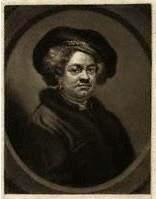Name John Pine | ||
 | ||
John Pine (1690–1756) was an English designer, engraver, and cartographer notable for his artistic contribution to the Augustan style and Newtonian scientific paradigm that flourished during the British Enlightenment.
Contents
Early life and apprenticeships
Little is known of Pine’s parents or ancestry. Biographical sketches frequently refer to him as black or of African ancestry, especially in the lore of Freemasonry, a society with which he became affiliated. However, the United Grand Lodge of England has not been able to verify such claims.
Pine began his career as an apprentice goldsmith. He also apprenticed with the French engraver Bernard Picart (1673–1733), who was associated with a movement described by historian Margaret Jacob as the "Radical Enlightenment."
Career
Pine was a close friend of William Hogarth, who also began his career as an engraver. It appears likely that their careers were mutually reinforcing, even though Pine remained principally in the field of engraving while Hogarth became a famous painter. Hogarth painted Pine several times; once, in his 1749 engraving The Gate of Calais, depicting him as a fat friar. Both men served as governors of the Foundling Hospital, and both were Freemasons, a social affiliation that was also a means of marketing their talents. Pine was a member of the Lodge that met at the Horn Tavern in Westminster and joined with other Lodges to form the Grand Lodge in 1717.
Pine engraved the frontispiece of the 1723 Constitutions of the Freemasons, which elevated his status as an artist and secured his position as principal engraver for the Grand Lodge. Subsequent work for the Grand Lodge included annual engraved lists of member Lodges, which provided details about the time and place of their meetings. These engravings included miniature signs for each Lodge symbolizing their meeting place, usually a tavern. Pine’s work is an essential part of the record of early Freemasonry.
In 1731, Pine worked with James Oglethorpe and the Trustees for the Establishment of the Colony of Georgia in America on the first conceptual map of the colony, illustrating many of its design principles. He may have prepared the more detailed plan for the town of Savannah, the source of which remains an intriguing mystery to town planners (see the Oglethorpe Plan).
In 1733, Pine began work on an edition of the works of Horace, considered a masterpiece of 18th-century book art. He engraved the text and illustrations for the entire work, which consisted of hundreds of pages. Subscribers who underwrote the project included the Prince of Wales, Handel, Alexander Pope, and Hogarth.
In 1735, Pine successfully collaborated with Hogarth and George Virtue in obtaining passage of a law enacted by Parliament securing copyrights for artists. This law granted specifically to him copyright on some works not otherwise original enough to receive copyright under it. He was a governor of the Foundling Hospital. In 1755 he was among those who attempted to form a royal academy for the arts, but he did not live to see it established.
Pine collaborated with surveyor John Rocque on the first detailed map of London, published in 1746.
Legacy
Pine’s achievements were recognized in 1743, when he became Engraver of His Majesty’s Signet and Seals, and subsequently Bluemantle Pursuivant of Arms in Ordinary.
His son, Robert Edge Pine (1730–1788), became a notable portrait painter of the late eighteenth century in both England and America. He painted George II and the famous actor David Garrick before emigrating to America where he painted Washington and other figures of the Revolutionary Era. Another son, Simon, became a miniature painter in Bath. Pine’s daughter, Charlotte, married a painter and was painted by Hogarth.
